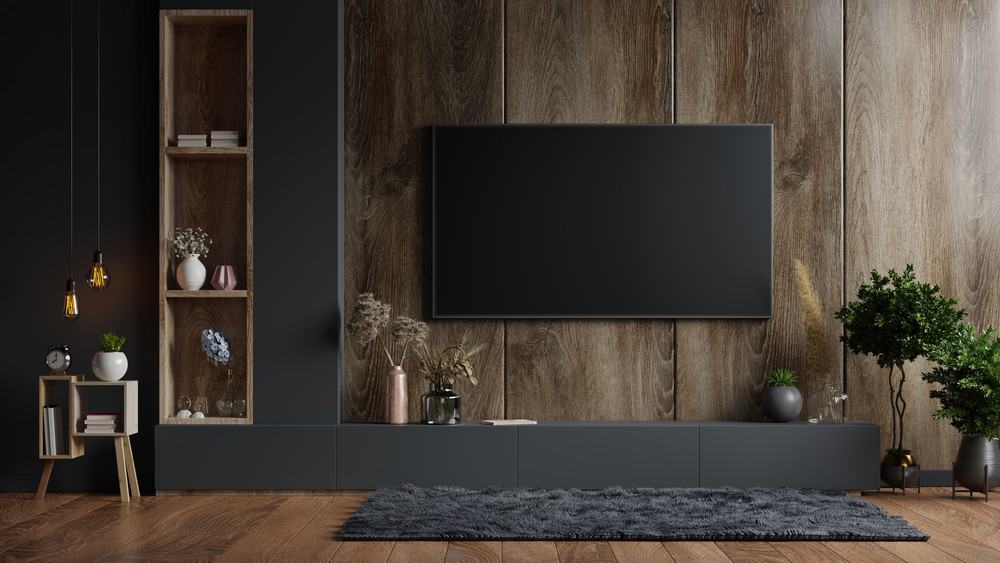When researching the best TVs, it’s common to see discussions about Nano Cell TV vs OLED. This is because both TV types deal with the screen’s color display depth and pixel lighting. And while each light source is similar, there are a few key differences. With this in mind, when shopping for TVs, it can also be good to know about OLED 4k vs QLED 8k.
KEY TAKEAWAYS:
- OLED technology offers a superior image with the deepest blacks and depth of the color output.
- Nano Cell TVs also provide good image quality but are more affordable.
- OLED TVs produce greater energy efficiency because of the individual pixel lighting,
Differences Between Nano Cell TVs and OLED
Before going further, it’s helpful to say upfront that OLED is just about unanimously considered to deliver a superior image. But for many purposes, image isn’t everything, and it’s still good to know the limits of each screen’s dynamic range so you can determine what’s best for your budget.
Comparing Image Quality
OLED stands for organic light-emitting diode. OLED TVs are unique because they use no backlight and instead individually light pixels when the onscreen image demands it. So while other screens can produce deep blacks, the OLED TV screen has perfect blacks because the pixel isn’t backlit. The difference may seem negligible, but it’s clear that OLED TV screens have the most lifelike and accurate images on the market.
Insider Tip
Certain NanoCell TV models come with full-array local dimming. This dims parts of the backlight in darker sections to give off darker black levels.
An LG NanoCell TV uses a backlit LCD-LED display. On top of the display is a thin screen with small (nano) particles that absorb any unwanted light wavelengths and filter out any inaccurate colors. As a result, these nanoparticles provide sharper images, vibrant color, and greater black levels. And some say that while OLED triumphs at offering superior blacks, Nano Cell TVs have more screen brightness.
Both options offer stunning visuals, but the OLED display technology is superior because it reflects the true light, which provides a more accurate picture. For gamers in search of a screen, it’s also helpful to understand the differences between monitors vs LED TVs.
Different Levels in Price
When it comes to shelling out the bucks, LG NanoCell TV steps into the spotlight. On the other hand, while offering deeper blacks and more accurate colors, OLED TVs are far more expensive. Typically, an OLED TV will start at around $2,000, while LG NanoCell TVs can begin at about $500.
Measuring Power Consumption
Because OLED TVs don’t have a continuously running backlight, they are more energy-efficient. LG NanoCell TVs use a constantly running backlight and therefore more power. However, the difference isn’t extraordinary when it comes down to it.
Warning
Although OLED TVs have outstanding picture quality, they tend to sell for twice the price as NanoCell TVs.
F.A.Q.S
How does LG NanoCell Technology work?
NanoCell TV technology operates with an LCD-LED backlight with a layer of nanoparticles. These nanoparticles filter out oncoming wavelengths that affect the accuracy of the onscreen color.
Between NanoCell and OLED, which is better?
Choosing between the two always comes down to use case and budget. OLED offers better picture quality, while NanoCell is more affordably priced. Many also say that NanoCell TVs come with features that make them great for gaming. c
Are NanoCell TVs worth it?
Absolutely. When considering both price and image quality, NanoCell TVs are an excellent option for a mid-ranged priced TV. Also worth checking out is the Samsung QLED, which uses quantum dots to amplify colors. This quantum dot technology is similar to NanoCell, but has its differences.
STAT: While it will likely take some time for 8K TVs to become a regular feature in homes around the world as well, there has been an undeniable impact with the first models. (source)
REFERENCES:
- https://www.bestbuy.com/site/tv-home-theater/learn-about-OLED/pcmcat1491615730278.c?id=pcmcat1491615730278#:~:text=OLED%20stands%20for%20organic%20light,popular%20LCD%20or%20LED%20screens.&text=Resolution%20refers%20to%20the%20number,Definition%2C%20that’s%20the%20TV’s%20resolution
- https://www.lg.com/us/tvs/lg-65nano90una-4k-uhd-tv
- https://www.youtube.com/watch?v=L6wifpbBSbor
- https://www.youtube.com/watch?v=3BV35L37XIk
- https://www.lg.com/uk/lg-magazine/tech-story/oled-v-qled-v-nanocell-8k

































![Best Drones Under the Cost of Ferrari in [year] 25 Best Drones Under the Cost of Ferrari in 2025](https://www.gadgetreview.dev/wp-content/uploads/image-test-3.jpg)
![Best LEDs & LCDs in [year] ([month] Reviews) 26 Best LEDs & LCDs in 2025 (December Reviews)](https://www.gadgetreview.dev/wp-content/uploads/Samsung-UN65RU7100FXZA.jpg)
![Best Streaming Services in [year] ([month] Reviews) 27 Best Streaming Services in 2025 (December Reviews)](https://www.gadgetreview.dev/wp-content/uploads/netflix-750x422-1.png)
![Best Streaming Movie and Shows in [year] ([month] Reviews) 28 Best Streaming Movie and Shows in 2025 (December Reviews)](https://www.gadgetreview.dev/wp-content/uploads/Streaming-reviews.jpg)
![Best TVs in [year] ([month] Reviews) 29 Best TVs in 2025 (December Reviews)](https://www.gadgetreview.dev/wp-content/uploads/Sony-XBR55X810C-TV-1.jpg)
![Best Shows on Amazon in [year] ([month] Reviews) 30 Best Shows on Amazon in 2025 (December Reviews)](https://www.gadgetreview.dev/wp-content/uploads/The-Boys-750x474-1.jpg)
![Best Small TVs in [year] 31 Best Small TVs in 2025](https://www.gadgetreview.dev/wp-content/uploads/best-small-tv-image.jpg)
![Best 60 Inch TVs in [year] 32 Best 60 Inch TVs in 2025](https://www.gadgetreview.dev/wp-content/uploads/best-60-inch-tv-image.jpg)
![Best 50 Inch TVs in [year] 33 Best 50 Inch TVs in 2025](https://www.gadgetreview.dev/wp-content/uploads/best-50-inch-tv-imgr.jpg)
![Most Energy Efficient TVs in [year] 34 Most Energy Efficient TVs in 2025](https://www.gadgetreview.dev/wp-content/uploads/most-energy-efficient-tv-image.jpg)
![Best TVs for Apple TV in [year] 35 Best TVs for Apple TV in 2025](https://www.gadgetreview.dev/wp-content/uploads/best-tv-for-apple-tv-image.jpg)
![Best TV Antennas in [year] ([month] Reviews) 36 Best TV Antennas in 2025 (December Reviews)](https://www.gadgetreview.dev/wp-content/uploads/best-tv-antennas-image.jpg)
![Best Mitsubishi TVs in [year] 37 Best Mitsubishi TVs in 2025](https://www.gadgetreview.dev/wp-content/uploads/best-mitsubishi-tv-image.jpg)
![Best Smart TVs in [year] ([month] Reviews) 38 Best Smart TVs in 2025 (December Reviews)](https://www.gadgetreview.dev/wp-content/uploads/best-smart-tvs-image.jpg)
![Best Conference Room TVs in [year] 39 Best Conference Room TVs in 2025](https://www.gadgetreview.dev/wp-content/uploads/best-conference-room-tv-image.jpg)
![Best Dumb TVs in [year] 40 Best Dumb TVs in 2025](https://www.gadgetreview.dev/wp-content/uploads/best-dumb-tv-image.jpg)
![Best 80 inch TVs in [year] 41 Best 80 inch TVs in 2025](https://www.gadgetreview.dev/wp-content/uploads/best-80-inch-tv-image.jpg)
![Best Shows on Hulu in [year] ([month] Reviews) 42 Best Shows on Hulu in 2025 (December Reviews)](https://www.gadgetreview.dev/wp-content/uploads/The-Handmaids-Tale-750x422-1.jpg)

















